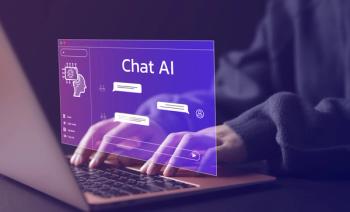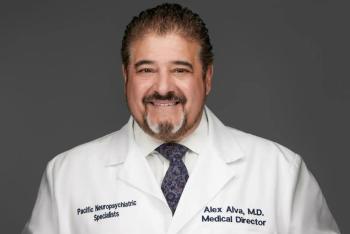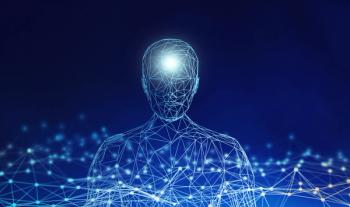
Intergenerational Gaps and the Role of Technology in Psychiatric Leadership: A Trainee’s Perspective
Key Takeaways
- Psychiatry is evolving with AI, telepsychiatry, and digital tools, affecting education, leadership, and patient care quality.
- Generational differences in psychiatry impact training, with Baby Boomers preferring traditional methods and Millennials/Gen Z embracing digital tools.
Technology can reshape psychiatric training and leadership, bridging generational gaps while enhancing patient care and education.
The field of psychiatry is evolving rapidly, influenced by technological advancements, changing societal norms, and generational differences in learning and leadership styles.1 The integration of artificial intelligence (AI), telepsychiatry, and digital tools into psychiatric education and practice has both facilitated and complicated dynamics within the field.2 These shifts impact leadership development, the patient-psychiatrist relationship, and the overall quality of psychiatric care.
This article explores how different generations approach psychiatric training, the benefits and challenges technology introduces, and the leadership implications of these changes. Case studies will illustrate these dynamics in real-world settings to offer examples for current-day leaders.
Intergenerational Gaps in Psychiatric Training
Psychiatric training today includes professionals from multiple generations, each with distinct learning styles, experiences, and technological proficiencies. According to Forbes, individuals born in the following years belong to the following generations3:
- Baby Boomers (Born 1946-1964): Many senior psychiatrists and psychiatrists in administration and leadership roles belong to this group. They often prefer traditional teaching methods, emphasizing in-person mentorship, structured learning, and hierarchical leadership.
- Generation X (Born 1965-1980): Some program directors, administrators, and leaders might also belong to this generation. This group balances traditional and digital learning, adapting to technology while valuing conventional mentorship models.
- Millennials (Born 1981-1996): Many early career psychiatrists, some administrators and leaders, and most residents and fellows belong to this generation. They embrace digital learning platforms, telepsychiatry, and AI-driven diagnostics. They value work-life balance, collaborative leadership, and evidence-based practices.
- Generation Z (Born 1997-2012): More junior residents and medical students belong to this generation. As the newest cohort in psychiatric training, they are digital natives, accustomed to rapid information retrieval, online simulations, and mental health apps.
These generational differences impact training approaches, communication, and leadership development.4
Why Is Technology at the Center of the Conversation?
When discussing intergenerational gaps, a key question that arises is: Why is technology always at the center of the conversation? At its core, technology—whether in its modern form or as a conceptual framework—has played a significant role in shaping historical eras. By definition, technology refers to the application of scientific knowledge to practical purposes, particularly in industry.5 For example, the Industrial Revolution was defined by the integration of that era’s technological advancements, which transformed industries and revolutionized the economy.6
Today, the most prominent technological advancements include social media, AI, and the widespread use of the internet and computers in daily life. These innovations bring both positive and negative implications. One significant advantage of modern technology is its impact on education, particularly in the medical field.7 The COVID-19 pandemic, for instance, demonstrated the necessity and effectiveness of virtual learning.8 As a medical student during the pandemic, I experienced the shift to Zoom-based lectures, which allowed students to attend classes remotely from across the country, increasing accessibility to knowledge. Additionally, simulation-based learning has become an integral part of medical education, utilizing highly realistic mannequins programmed with physiological responses to provide hands-on training for complex medical scenarios.9
Another major technological shift in medicine has been the integration of electronic health records (EHRs).10 For younger generations, particularly Millennials and Gen Z, the use of EHRs is second nature, streamlining documentation and improving access to patient history and data analysis.11 However, this technological shift has contributed to a generational divide in the medical field.4 Older generations, who were trained in a vastly different health care environment, often express skepticism about certain digital practices. For example, while many in younger generations readily accept the use of telemedicine as a normal and effective part of health care, some older professionals continue to debate its reimbursement and legitimacy.
A similar divide exists in the field of mental health. While some providers embrace mental health apps as tools to assist with patient routines and self-care, others remain cautious about their efficacy and appropriate use. This divide does not indicate that one generation is more correct than the other; rather, it highlights differences in technological adaptation that can sometimes lead to misunderstandings or prejudice.
Of course, no discussion of technology would be complete without acknowledging its drawbacks. One major concern is the potential reduction in human connection, especially in fields like psychiatry, where meaningful patient interaction is essential. The increased availability of medical information online also presents challenges. While access to knowledge has expanded, it has also led to a rise in self-diagnosis, which can complicate treatment when patients come in with preconceived notions about their conditions. Finally, ethical considerations are always at the forefront, especially while considering internet and cyber security.
Ultimately, while technological advancements have significantly improved various aspects of medicine and education, they have also contributed to intergenerational differences in how these tools are perceived and utilized. Understanding and addressing these differences is crucial for fostering collaboration and ensuring that technology serves its intended purpose: enhancing, rather than hindering, human well-being.
Impact on Leadership in Psychiatry
Generational divides play a significant role in shaping how technology and leadership are perceived within the field of psychiatry. Leaders in this field must navigate diverse teams composed of individuals from different age groups, each with distinct perspectives on leadership and decision-making. Understanding these generational differences is essential for fostering effective teamwork and ensuring smooth collaboration in psychiatric training and practice.
Traditionally, Baby Boomers (born 1946-1964) and Generation X (born 1965-1980) tend to view leadership through a hierarchical lens. These generations often emphasize authority, structured mentorship, and experience-based decision-making. In this model, leadership is typically assigned to the most experienced individual, and subordinates are expected to follow directives without significant questioning. Decision-making is often top-down, with an emphasis on deference to authority figures.
In contrast, Millennials (born 1981-1996) and Generation Z (born 1997-2012) tend to favor a more collaborative leadership style. These younger generations place a strong emphasis on teamwork, open communication, and transparency.12 Millennials and Generation Z value straightforward and open communication, regular feedback, and consistent follow-through on promises.13 Additionally, they are often comfortable expressing disagreement and engaging in discussions about alternative approaches, which can sometimes contribute to generational tensions in leadership structures.14
For psychiatric leaders, navigating these differences can be challenging, especially in environments where all 4 generations may be working together. Effective leadership requires balancing the structured expectations of older generations with the collaborative and transparent preferences of younger professionals. This is particularly relevant in medical education and training, where residents and medical students must simultaneously learn from experienced mentors while also being encouraged to think critically and make independent decisions.
Case Examples
To illustrate these generational dynamics in psychiatric leadership, the following section will present 2 case scenarios highlighting how technological advancements can amplify these divides and influence decision-making in psychiatric settings.
Case 1: Integrating AI in Training
In a third-year psychiatry clerkship, medical educators introduced an AI-driven chatbot to simulate psychiatric cases as part of clinical skills assessment. This innovation aimed to streamline the evaluation process by reducing faculty time and resource requirements while maintaining the integrity of clinical training. Medical students quickly adapted to the new system, as they were already familiar with AI chatbots such as ChatGPT and Gemini. Their comfort with digital tools made the transition seamless, and they appreciated the flexibility of completing assessments remotely, allowing them more time to prepare for their shelf exams.
However, some faculty members resisted the integration of AI-driven simulations. Their primary concern was that AI-generated responses might lack the nuances of real human interactions, potentially failing to assess students’ interpersonal and communication skills adequately. These faculty members, primarily from older generations, valued traditional methods of clinical assessment and were hesitant to rely on technology that might not fully capture the complexities of psychiatric patient encounters.
This situation placed the clerkship director in a difficult position, as there were clear advantages and disadvantages to both perspectives. On one hand, AI-driven simulations provided convenience, cost-effectiveness, and security benefits while aligning with the learning preferences of younger trainees. On the other hand, concerns about the authenticity of AI-generated interactions and their potential impact on clinical skill development were valid.
Ultimately, there is no definitive right or wrong decision in this scenario. However, the clerkship director could adopt a collaborative approach that leverages the strengths of each generation. By transparently explaining the reasoning behind either incorporating or rejecting AI-driven assessments, the director can foster open dialogue and address concerns from all stakeholders. Additionally, experienced faculty members from the Baby Boomer and Generation X cohorts could contribute their expertise to refine the technology, ensuring that assessments emphasize the critical interpersonal skills necessary for psychiatric practice. They could also help tailor the AI feedback system to provide more personalized and meaningful evaluations, making the tool more effective for all trainees.
By integrating the insights of both younger and older generations, the clerkship director can develop an approach that balances technological innovation with the essential human elements of psychiatric training.
Case 2: Grand Rounds Conflicts
A Generation X program director faces a dilemma regarding the format of grand rounds. On one hand, Millennial and Generation Z residents prefer prerecorded lectures, as they find it challenging to focus during live sessions while managing multiple responsibilities. They appreciate the flexibility of asynchronous learning, which allows them to engage with the material at their own pace.
On the other hand, the program director’s Generation X colleagues believe that in-person attendance is a sign of respect for the speaker, especially when presenters have traveled to deliver their lectures. They argue that live participation fosters engagement and demonstrates professional courtesy.
To address this generational divide, the program director implements a hybrid model. The didactic portion of grand rounds is recorded and archived digitally, enabling younger trainees to review the material at their convenience. Meanwhile, an in-person case discussion component remains, ensuring active engagement and honoring the speaker’s time and effort.
This case illustrates how creative solutions can bridge generational differences, fostering a learning environment that accommodates diverse preferences while maintaining the integrity and tradition of medical education.
Concluding Thoughts
The intergenerational gap in psychiatric training is both a challenge and an opportunity. Technology can enhance education, clinical practice, and leadership if integrated thoughtfully. Bridging the generational divide requires open dialogue, flexible training methods, and leadership strategies that balance innovation with traditional wisdom. By fostering adaptability and collaboration, psychiatry can evolve to meet the needs of future generations while maintaining the human essence of mental health care.
Dr Noureddine is a psychiatry resident at Icahn School of Medicine at Mount Sinai, in New York, NY.
References
1. Torous J, Bucci S, Bell IH, et al.
2. Lee EE, Torous J, De Choudhury M, et al.
3. Morel D. How to navigate a six-generation workforce. Forbes. July 1, 2024. Accessed June 3, 2025.
4. Nakagawa K, Yellowlees P.
5. Thierer A. Defining “technology.” Medium. October 12, 2024. Accessed June 3, 2025.
6. Industrial revolution. Encyclopædia Britannica. Accessed June 3, 2025.
7. Jeffries PR, Bushardt RL, DuBose-Morris R, et al.
8. Li D.
9. Elendu C, Amaechi DC, Okatta AU, et al.
10. Janett RS, Yeracaris PP.
11. Akubuiro JO. A quantitative study of the factors affecting health care technology use in the Millennial generation [dissertation]. Northcentral University; 2018. Accessed June 18, 2025.
12. Manongcarang SMD, Guimba SD. Intergenerational challenges and how they manifest in the public workforce: a basis for designing effective performance management strategies. Workforce. 2024;7(25):1-15.
13. Fox M. Workers talk about quitting as part of the ‘Great Resignation.’ Employers aren’t buying it. CNBC. July 13, 2021. Accessed June 3, 2025.
14. Heuss SC, Zimmerli L, Schneeberger AR.
Newsletter
Receive trusted psychiatric news, expert analysis, and clinical insights — subscribe today to support your practice and your patients.











